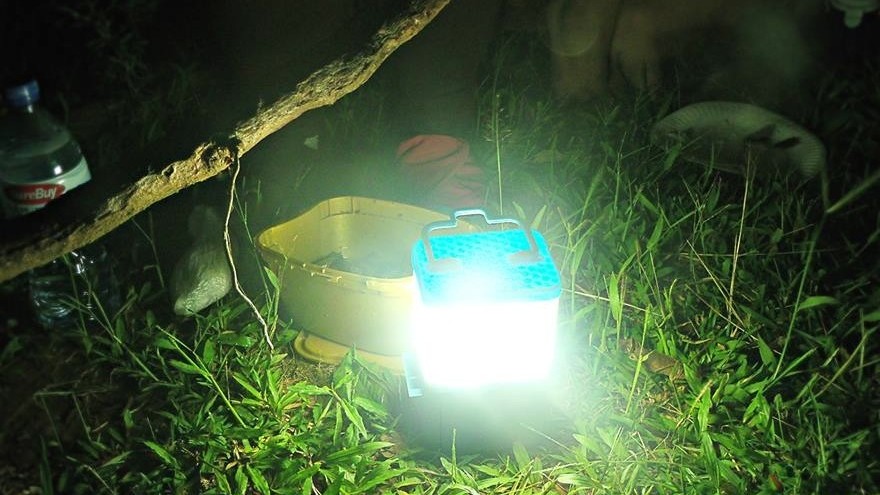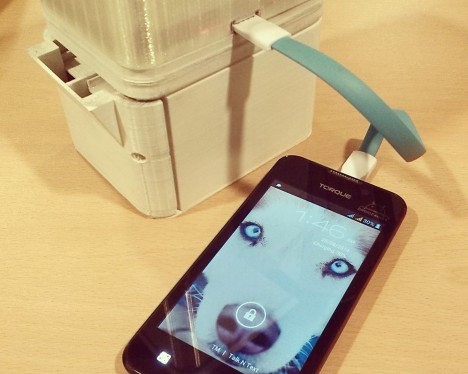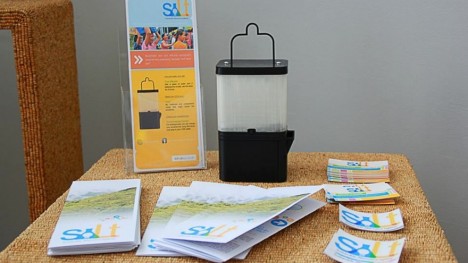Aiming to bring low-cost illumination to residents of the Philippines, a nation of 7,000 oceanic islands, the Salt Lamp uses a free and abundant resource to reduce fire risk from candles and replace the cost of traditional lighting.
Developed by engineer Lipa Aisa Mijena of De La Salle University, the Salt Lamp requires a single glass of water with two tablespoons of salt to provide a night’s worth of a light (complimenting approaches like Liters of Light that work in dark spaces during the day), but, best of all, it can run off the naturally salty water of the surrounding ocean.
A pair of electrodes, the other key ingredient, can run for up to a year without requiring replacement. The next-generation version of the Salt Lamp will also have the capacity to charge batteries in portable electronic devices including cellular phones. Essentially, “this lamp uses the science behind the Galvanic cell, the basis for battery-making, changing the electrolytes to a non-toxic, saline solution — making the entire process safe and harmless.”
Currently, many households in the Philippines lack access to or funds for electricity, resorting instead to oil lamps (which can cause house fires) or normal battery-powered lights (which cost more to use). Worse, during times of critical need (the area being prone to natural disasters) the resources required to make light are all the more essential yet difficult to acquire. From experience spending time with locals around the country and as a member of Greenpeace Philippines, Mijena developed the Salt Light as an eco-friendly, low-footprint alternative to other conventionally-connected lamps and lights.
The lamp is also being made available commercially but, first and foremost, it is designed to be deployed via non-profit organizations to those in need. “There are no materials and components inside the lamp that may cause fire accidents. One less thing to worry about for families that rely on kerosene lamps as their main source of lighting.”




